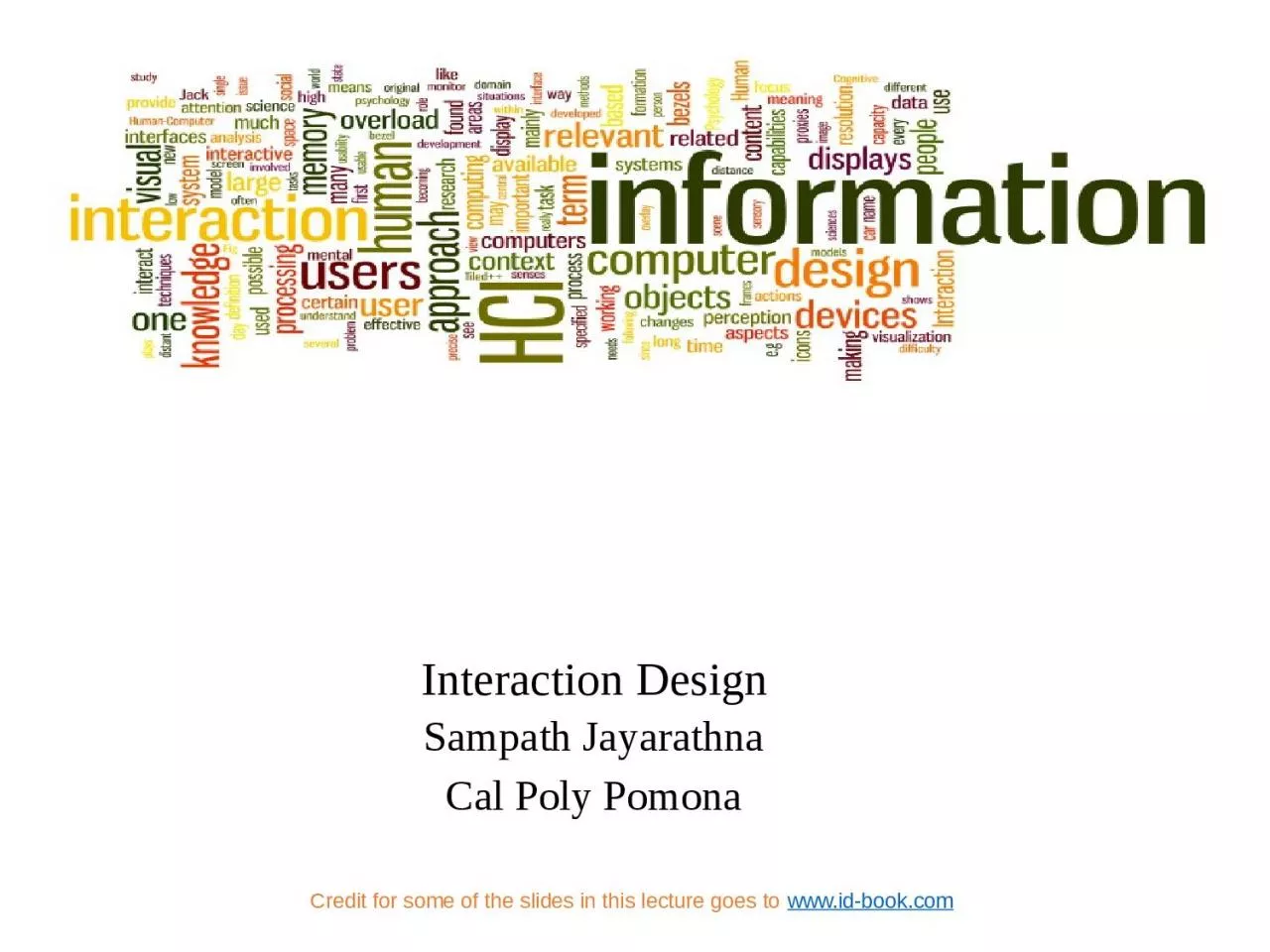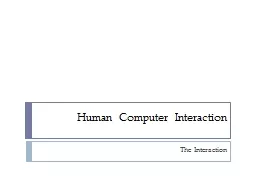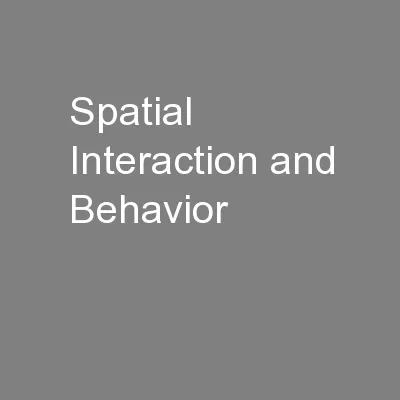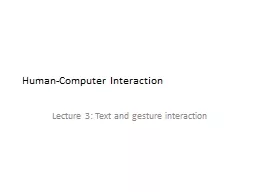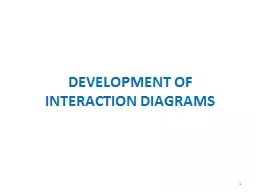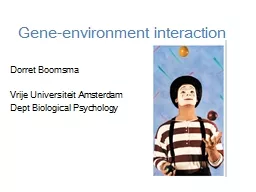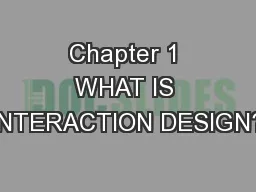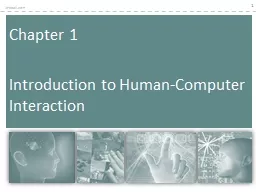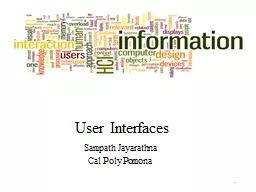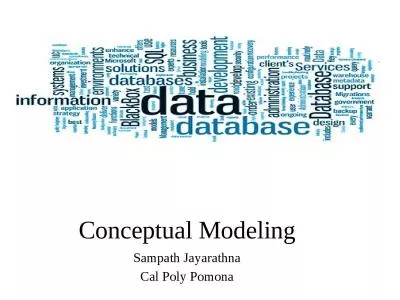PPT-Interaction Design Sampath Jayarathna
Author : sophia | Published Date : 2023-09-24
Cal Poly Pomona Credit for some of the slides in this lecture goes to wwwidbookcom What is humancomputer interaction HCI HCI is the study and the practice of
Presentation Embed Code
Download Presentation
Download Presentation The PPT/PDF document "Interaction Design Sampath Jayarathna" is the property of its rightful owner. Permission is granted to download and print the materials on this website for personal, non-commercial use only, and to display it on your personal computer provided you do not modify the materials and that you retain all copyright notices contained in the materials. By downloading content from our website, you accept the terms of this agreement.
Interaction Design Sampath Jayarathna: Transcript
Cal Poly Pomona Credit for some of the slides in this lecture goes to wwwidbookcom What is humancomputer interaction HCI HCI is the study and the practice of usability It is about understanding and creating software and other technology that people will want to use will be able to use and will find effective when used. IS 403: User Interface Design. Shaun Kane. Today. More on interaction design. Getting started with user testing. Check-in on A6. How is everybody doing?. Problems? Need feedback?. A7. . posted. Interaction design. The Interaction. The Interaction. interaction models. translations between user and system. ergonomics. physical characteristics of interaction. interaction styles. the nature of user/system dialog. context. Some Questions. What would induce emigrants to leave everything behind and risk everything on moving elsewhere?. What considerations influence how individual human beings use space and act within it?. . . Bao-Xi SUN. (. 孙宝玺. ). Beijing University of Technology. . . Hirschegg 2014. Hadrons from Quarks and Gluons,. Jan. 12-18, 2014 . Lecture 3: Text and gesture interaction. Visual Design . Exercise Review. Visit. Guardian . data blog. Browse. “Data A-Z”. Propose. new. visualisation. Graphic Resources. Correspondence. Design Uses. Ilyena Hirskyj-Douglas. Janet C Read. Brendan. Cassidy. University of Central Lancashire . HELLO!. I am . Ilyena . Hirskyj-Douglas. What is Animal Computer Interaction?. Animal Centered Approach. Understand Technology from an Animals Perspective. 1. DEVELOPMENT OF INTERACTION DIAGRAMS. Should an axial compressive load be applied to a short concrete member, it will be . subjected to . a uniform strain or shortening, as is shown in Figure 10.3(a). If a moment . . Dorret Boomsma. . Vrije Universiteit Amsterdam. Dept. Biological Psychology. No aspect of human behavior genetics has caused more confusion and generated more obscurantism than the analysis and interpretation of the various types of non-additivity and non-independence of gene and environmental action and interaction . 1. Overview. I will explore Embodied Interaction, looking into its:. Presence in Tangible and Social computing. Philosophical Background. The foundation it creates for HCI. Its effect on HCI . design. Bad designs. Elevator controls and labels on the bottom row all look the same, so it is easy to push a label by mistake instead of a control button. People . do not make same mistake for the labels and buttons on the top row. Why not?. 2. Overview. What is HCI design?. Good vs. bad design. Interaction design. Interaction design process. Goals of interaction design. Design and usability practices. 3. By the end of this chapter, you will... Cal Poly Pomona. 1. Why. study user interfaces?. Good UIs are critical to success. UI programming is. easy . (sophisticated algorithms not required). straightforward (can immediately correct mistakes). Cal Poly Pomona. Overview of Database Design Process. Two main activities:. Database design. Applications design. Focus in this chapter on . conceptual database design. To design the conceptual schema for a database application. Introduction Sampath Jayarathna Cal Poly Pomona Today Who I am CS 599 educational objectives (and why) Overview of the course, and logistics Quick overview of IR and why we study it 2 Who am I? Instructor : Sampath Jayarathna Joined Cal
Download Document
Here is the link to download the presentation.
"Interaction Design Sampath Jayarathna"The content belongs to its owner. You may download and print it for personal use, without modification, and keep all copyright notices. By downloading, you agree to these terms.
Related Documents

